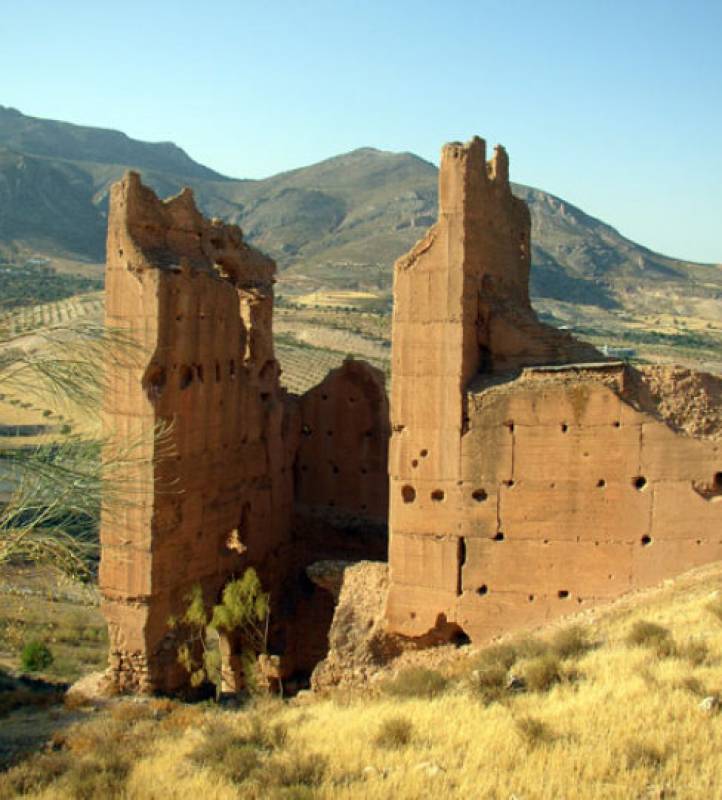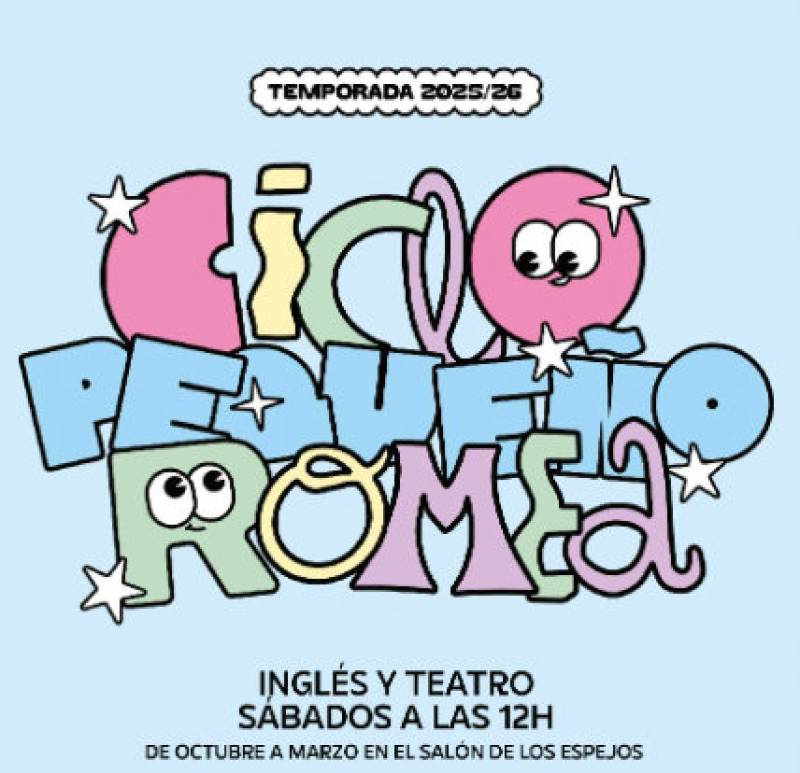
To be listed on the haciendadelalamo TODAY MAP please call +34 968 018 268.
The ruined castle of Xiquena in the north-west of Lorca
A Moorish fortress on the Murcia-Andalucia boundary which was captured by Christians from the Moors in the 13th century
 The fortress of Xiquena is a ruined fortification very close to boundary between Murcia and Andalucía in the north-west of the large municipality of Lorca, alongside the C-22 road which leads from La Parroquia to the Almería town of Vélez-Rubio.
The fortress of Xiquena is a ruined fortification very close to boundary between Murcia and Andalucía in the north-west of the large municipality of Lorca, alongside the C-22 road which leads from La Parroquia to the Almería town of Vélez-Rubio.
This has been frontier country ever since the Christian forces took control of most of Murcia in the 13th century while Andalucía remained under the control of the Moors, whose kingdom was based in Granada, and this explains the reasons for the construction of a fortress in what is nowadays a fairly isolated area. However, the spectacular valley in which the small hill of Xiquena stands was settled in by people glad of the water from the River Corneros as long ago as the 5th century, and even before that it is known that the route of the Roman Via Augusta passed through here.
 The Christians first took control of the area in 1233, when the troops of Alonso Yáñez Fajardo captured the Islamic fortress of Xiquena and the neighbouring castle of Tirieza after a brief siege and bombardment, and it was this campaign which led to Yáñez Fajardo’s nephew, Alonso Fajardo “El Bravo” being made a “caballero”. Tirieza was soon deserted and Xiquena became the local outpost of the Kingdom of Murcia on the front line with the Nasrid kingdom of Granada.
The Christians first took control of the area in 1233, when the troops of Alonso Yáñez Fajardo captured the Islamic fortress of Xiquena and the neighbouring castle of Tirieza after a brief siege and bombardment, and it was this campaign which led to Yáñez Fajardo’s nephew, Alonso Fajardo “El Bravo” being made a “caballero”. Tirieza was soon deserted and Xiquena became the local outpost of the Kingdom of Murcia on the front line with the Nasrid kingdom of Granada.
In 1450 it was gifted by King Juan II of Castilla to Alfonso Fajardo, but nine years later he sold it to the Marqués de Villena, Don Juan Pacheco, who used the fortress to strengthen his political position.
As the Christian frontier advanced towards Granada during the 15th century, resulting eventually in the expulsion of the Moors from Spain in 1492, the castle became less important and the struggle for control of Xiquena became a domestic one, principally between the Pacheco family and the local authorities in Lorca.
 The troops of Pedro Fajardo Chacón, Marqués de Los Vélez from 1507 to 1546, destroyed the fortification even while it was still in the hands of the family, no doubt deeming it to be of secondary importance to that of the nearby castle of Vélez Blanco.
The troops of Pedro Fajardo Chacón, Marqués de Los Vélez from 1507 to 1546, destroyed the fortification even while it was still in the hands of the family, no doubt deeming it to be of secondary importance to that of the nearby castle of Vélez Blanco.
Some maintain that the name “Xiquena” is derived from the Arabic “Gikena” or “Gehenna”, meaning “hell”, while others believe it is named after a Roman villa which had been located nearby.
Nowadays the area is a popular one among walkers and mountain bikers who enjoy the spectacular landscape of the Sierra del Gigante, and from the ruins of the castle there are attractive views out to the fortresses of Tirieza, Puentes, Vélez Blanco and Vélez Rubio.
For more local visiting information, events and news go to the home page of Lorca Today.
Oficina de Turismo de Lorca

The rich and extensive history of Lorca has left a legacy of archaeological sites, and historic buildings, around which the modern city has built its tourism industry. Among these are Lorca Castle, the Jewish quarter of the castle and synagogue, Plaza de España, Colegiata de San Patricio, Museo de Arqueologico Municipal, Iglesia de San Francisco, Casa Huerto Ruano, Palacio de Guevara, Iglesia de San Mateo, Pósito de los Panaderos, Convento Virgen de las Huertas, Antiguo Convento de la Merced, Iglesia del Carmen and the Teatro Guerra.
 Unfortunately Lorca has also been prone to natural disaster, suffering a Gota Fría on September 28th 2012, as well as two earthquakes measuring 5.3 and 5.5 on the Richter scale on 11th May 2011, claiming 9 lives. Since this earthquake the city has been rebuilding, winning recognition for its Lorca, Open for Restoration initiative, which used the restoration of the city as a tourist attraction whilst it rebuilt its historical buildings, some of which are currently still not open.
Unfortunately Lorca has also been prone to natural disaster, suffering a Gota Fría on September 28th 2012, as well as two earthquakes measuring 5.3 and 5.5 on the Richter scale on 11th May 2011, claiming 9 lives. Since this earthquake the city has been rebuilding, winning recognition for its Lorca, Open for Restoration initiative, which used the restoration of the city as a tourist attraction whilst it rebuilt its historical buildings, some of which are currently still not open.
The tourist office relocated for 14 years to Calle San Patricio, near the church, but has now returned to its former premises alongside the Palacio de Guevara in the Plaza Concha Sandoval, or Plaza de la Bordadora (click for map).
Lorca also has an area of coastline incorporating the Parque Regional de Cabo Cope - Puntas de Calnegre, in the Sierra de Almenara, which includes the beaches of Puntas de Calnegre, Baño de las Mujeres, San Pedro, El Siscal, Cala Honda, Cuartel del Ciscar, Junquera, Cala de la Gruta, Cala Leña, Los Hierros, Cala Blanca and Playa Larga, although many are accessible only along difficult tracks or by boat!

However, in spite of its many attractions, the name of Lorca is synonymous with Easter, (Semana Santa) its biblical parades of International Tourist Interest status and famous throughout Spain. The week includes a series of processions in which the Whites (Paso Blanco) and Blues (Paso Azúl) try to outdo each other with the magnificence of their embroideries and the skill and daring of their horsemen.
Lorca also has a Parador hotel, located within the historic castle.
Opening hours for Lorca tourist office:
Every day of the year apart from 1st and 6th January and 25th December, 10.00 to 14.00 and 16.30 to 18.30 (except Sunday afternoons).
These opening times are often extended and other information points created during the Semana Santa celebrations.
For more local news, events and visiting information go to the home page of Lorca Today







































